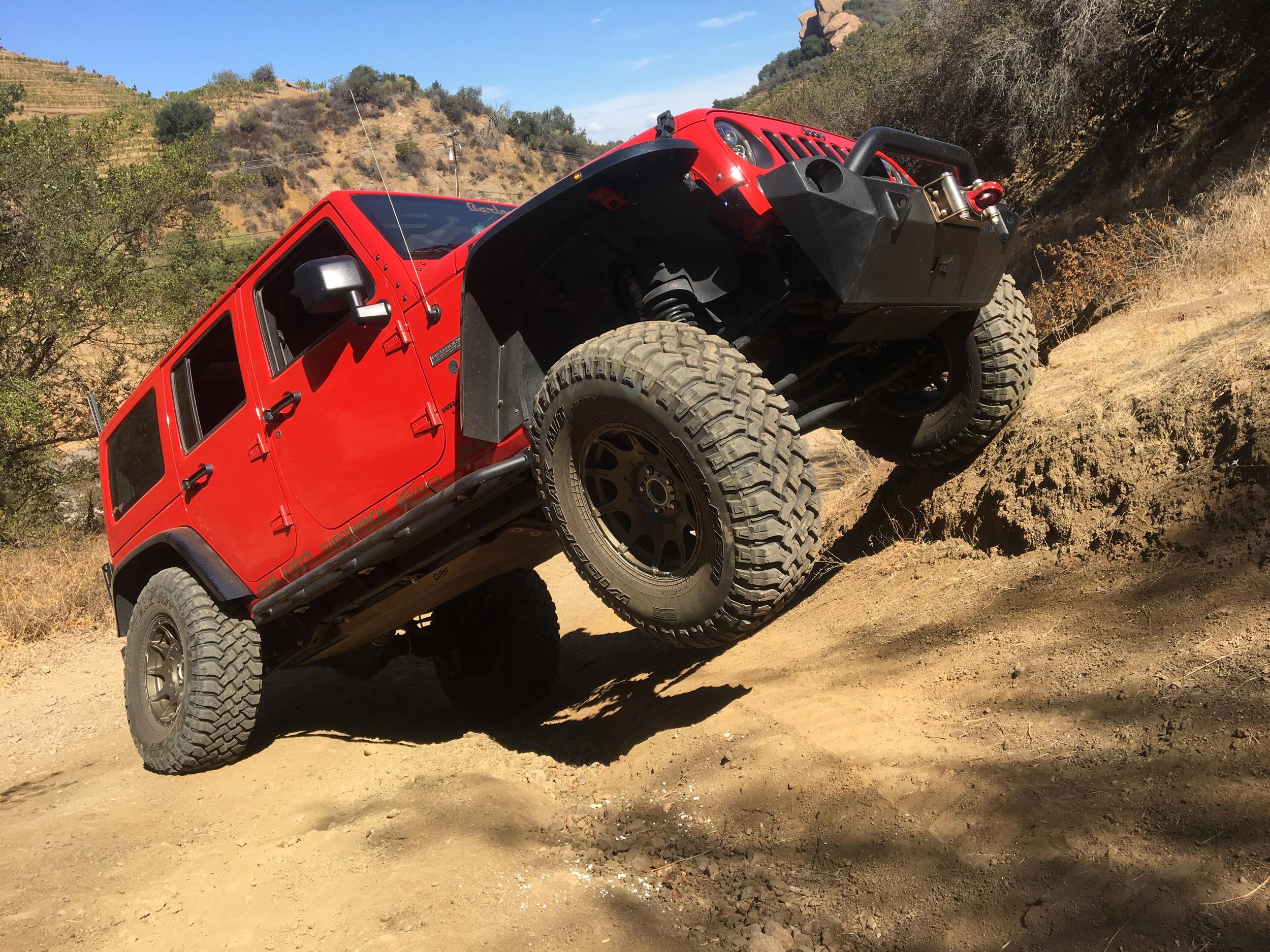New Jeep Build Shakedown Strategies
By Nena Barlow
This article originally appeared on fourwheeler.com.
We build at least a dozen Jeeps a year, mostly Jeep JK Rubicons. Most of our builds are mild to moderate, with a shortarm suspension lift, taller tires, and some extra skids plates and armor. All of the modifications have to fit and function perfectly together, or we don’t send it out. The last thing you want is to hear a grinding noise or feel your brake pedal go to the floor on your first trail run. Here are some things we check, how we check them, and how we make adjustments.
First Things First
First, let me say that most reputable suspension manufacturers provide the track bar, brake line brackets, and correct-length shocks for the spring height in their kit. We have found that a 2 1/2-inch lift on a Jeep JK is pretty simple and rarely requires modifications beyond the kit. However, as I covered in an earlier article, once you go 3-inches or taller, expect to have to make some adjustments. The further away you go from the original engineering, the exponentially more complicated it becomes to adjust everything to work together properly.
Once everything is installed and a walk-around inspection looks right, we put the Jeep “on the bumps.” At our shop, we have two parallel dirt mounds where we can park the Jeep across them diagonally to achieve full articulation and inspect our work. However done, make sure to flex the axles in both directions to the point where a wheel wants to lift off the ground. Secure the vehicle (transmission in Park in 4WD, emergency brake on, wheel chocks placed, and engine off), and inspect the following.
Brake Lines
Are the brake lines too tight on droop, or pinched on compression? Zip-ties are adequate for holding the brake lines away from the coil spring so that it will not crush them when it compresses. Are the ABS and wheel sensor wires rubbing anywhere? We see them want to move out toward the wheel on the rear. Also, check the clearance near the front axle U-joint.
Shock Check
Do they extend fully and compress fully, or are they too short or too long for the springs and sway bar links? Too long or too short and you will be “bottoming out” or “topping out” the shock early in the suspension cycle and not getting full articulation, not to mention hearing some interesting clunks and shortening the life of your shock. Do they rub on the front of the frame when extended? (Brackets can correct this.) Do the tires make contact with the remote reservoir (if equipped) when turned lock-to-lock while articulated?
Sway Bar Links
The links should be long enough to take advantage of the range of articulation available but not too long as to jam the upper ends into the frame, brake lines, and fenders. We find that when the Jeep is sitting level, the front sway bar arms should be between perpendicular to the ground and up to a 10-percent upward pitch to the top of the link.
Driveshafts
On ’12-current JKs, we move our evaporative canister over about 1 1/2 inches so that the rear driveshaft boot won’t tear off on the edge of it. Your front driveshaft becomes an issue with 3-inches or more of lift, requiring spacers or custom exhaust so that your driveshaft won’t rub on it the pipe.
The Etcetera
Do the springs seat properly when extended and then compressed? Do your axle breather tubes, locker wires, and e-brake cables all have enough length, or do you need to pop out an extra fastener or two? Does the track bar, steering stabilizer, and tie rod clear when you turn the front wheels lock to lock? Do the tires hit the fenders, bumpers, or sliders when you are fully articulated and when you turn the front wheels lock-to-lock?
Every time you modify a Jeep, expect small adjustments and schedule the time to do so. Don’t be that guy who lifted his Jeep the day before hitting the trail and expecting a trouble-free trip. Do the job right and do your homework. Happy trails!
Find a spot (a legal and ethical spot, please!) to flex your suspension and check for clearance issues.
Many lifted JK’s will have driveshaft rubbing issues with the gas tank and the evaporative canister. We move the evaporative canister over about 1.5” to allow for extra driveshaft travel, and we use an adjustable rear track bar, if necessary, to correct rear axle alignment to minimize rubbing the driveshaft or flange on the gas tank.
Inspect your brake lines at full compression and full extension of your suspension. You don’t want them to be tight or rubbing anywhere. We use a zip tie to hold the brake lines to the front shocks. Note that we remove the factory bracket that holds the brake line to the bottom of the spring perch—this allows the extra length we needed for this lift.
This is the maximum upward angle at which you want your sway bar to sit when the Jeep is level. Conversely, you don’t want it below a level state—sway bar links that are set too short will hyper extend.
This Jeep needs a bit more bump stop in order to avoid rubbing or ripping off her own fender flare. Also check the contact with the rocker guards.
THAT is full compression—that bump stop is not going to allow the Jeep to compress any further. Springs are not squished into any components, brake lines not rubbing frame or anything else.





